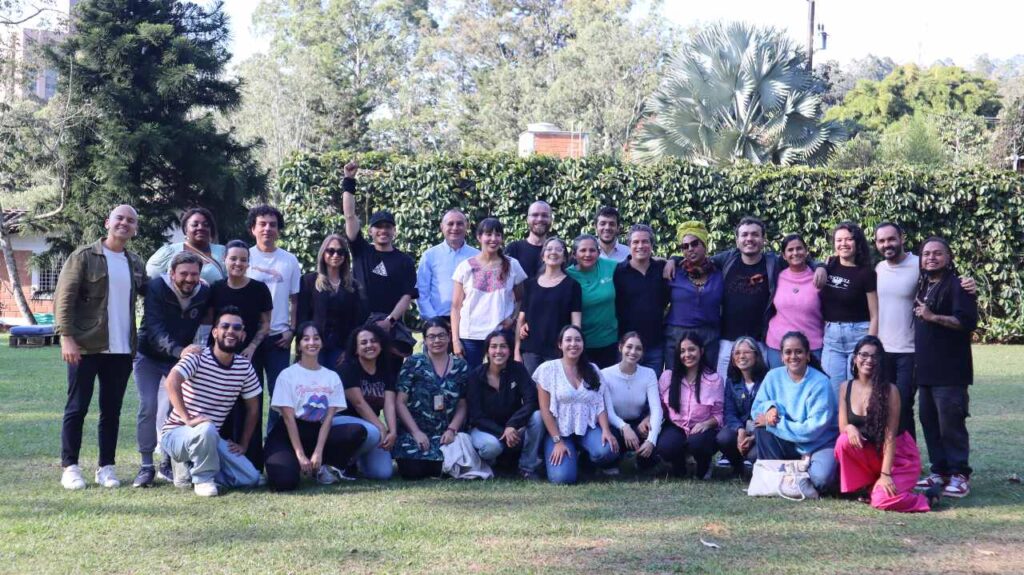id=”442″ id=”post-1108″ class=”wp-post-content-block ” itemscope itemtype=”http://schema.org/BlogPosting” itemprop=”blogPost”>
Misogyny and Interpellation in the Music Industry
By Samantha Nengomasha
Music and Gender
Writing about the misogyny embedded in the music industry appears a lamented oratory given that society’s reaction has evolved from distaste to indifference. Some, many, are still perplexed by the voluptuous and/or light skinned models in music videos, some that have gained social recognition from these features. Whereas the music continues to coin the typical desirable qualities of women, particularly the physical attributes and submission to men, it is still obscure why there is voluntary participation by and praise to these women. Judith Butler’s “Gender Trouble: Feminism and the Subversion of Identity” feminist stance identifies this as an agent of patriarchy, men shaping a popular representation of how women should look and behave. Millennials will argue that it’s cultural homogenisation. As a scholar the first thing that popped up in my mind is ‘Interpellation’. It is this academic theory I would like to apply and relate.
Why interpellation?
The answer is why not? All other theories will tell you how people behave but will not explicitly show why an actor voluntarily acts as an agent to subject oneself. Why interpellation? Simple, interpellation describes the process by which ideology, embodied in major social and political institutions constitutes the very nature of individual subjects’ identities through the process of “hailing” them in social interactions. This definition sounds straightforward, thanks to Wikipedia. In other words, individuals self-construct their identities based on what is socially “saluted”. More elaborate now?
Althusser defines ideology as “…the imaginary relationship of individuals to their real conditions of existence” Key word, imaginary. It is this vacuum of imagination that accommodates hegemony which in return reproduces itself by obscuring traditional forms of repression and incorporating individuals into the power structure. To take for example religion and the female body, women are instructed to conserve their femininity by covering up most parts of their body. This is a traditional form of repression. However now being able to not only uncover these parts; thighs, shoulders, stomachs etc, but to additionally dance suggestively against a man’s crotch a woman feels incorporated into the power structure. The question becomes, “is this real power or artificial imaginary strength?”
Empowerment vs Disempowerment
The process of interpellation consists of a system where individuals recognize themselves as subjects through ideology. This explains how people can be fully aware and complicit in their own domination. Butler gives an example of how women’s behaviour does not give rise to femininity but is rather a product of the ideology. Performing expositions of the softer sex make one subject to the ideology of being female. Wearing make-up, dresses, weaves or stilettos etc does not give you power over gender roles but rather makes you a product of the imaginary gender characteristics. Likewise dancing facedown legs in the air with your waistline hula hooping half naked is a voluntary disempowerment act mistaken for liberty.
A local foreign based artist, Vimbai Zimuto’s “Hapana Kwaunoyenda” is one precise example of the truth in this theory, and her interview to justify the nudity and sexual connotations hits the bull’s eye. She is not the only one; Kikky Badass, Queen Vee, Lady Bee and Tiara Baluti are younger artists incorporated into the Hip Hop and Dancehall culture through this “self-exploitation”. Ever wonder how Fungisai Zvakavapano went from divine gospel sound to zimdancehall secular music? Ever wondered why Ammara Brown and Nadia Nakai are more popular than Selmor Mutukudzi, Pah Chihera or Tamy Moyo? Not to mention the nameless women on Jah Prayzah, Ex Q or other underground start-up’s latest music videos whose role as models or groupies is unclear? Cultural Interpellation should provide an answer. (Look them all up and support local artists please!)
How is it disempowerment when it is done in independence? Well, independence does not entirely or directly translate to emancipation. It is one attribute to act freely, and another to be set free. Hegel argued to give a phenomenological explanation to the essential realisation of self-consciousness in a thesis he simplified to “common sense”. In this discourse, people are under the impression that they’re “…governed by free will, reason, knowledge, experience and, to a lesser degree, emotion.” This is borne from the “Age of Enlightenment” and its components of reason and rationality; common sense. These ideas are further cemented by ideological repressive apparatus; family, school, church, community, work organisations and media, media becoming the most effective repressor in the music industry.
The Cultural aspect
Cultural theorists have argued that the “homogeneity of mass media interpellate passive subjects who desire reoccurring tropes and predictable story lines which only serve to further stultify them”. (Horkheimer & Adorno 1979) This means that media has made women complicit in their subjectification based on global assumptions and as a result they become implicit to controversial practices such as the increasing objectification of the female body in the music industry.
Something to think about…
Now, regardless of whether it is a growing models’ industry or a play ground for male gaze, the next video set you see featuring skimpy-dressed light-skinned well-proportioned beautiful women whose action you shun or admire, be sure to remember that media is the widest agent of interpellation, and these “free” actors/models are not as unconventional as they feel.





